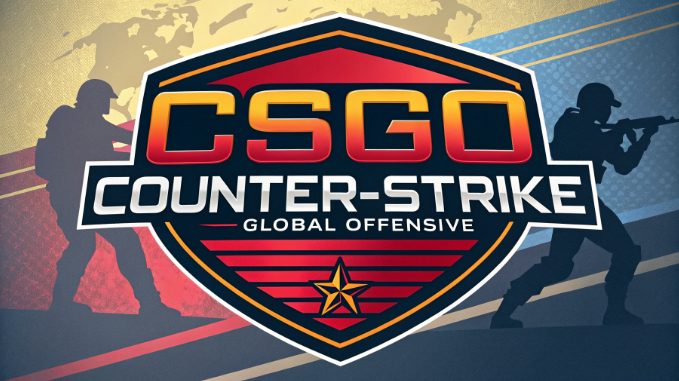CSGO Server: Build Cheap High-Performance Private Servers

In the competitive world of CSGO gaming, private server hosting has become increasingly crucial for teams, communities, and tournament organizers. This comprehensive guide explores the intricacies of establishing and maintaining high-performance CSGO servers in US data centers, focusing on cost-effectiveness without compromising gaming experience.
Understanding CSGO Server Fundamentals
Before diving into technical specifications, it’s essential to understand why server location and configuration matter significantly in CSGO:
- Server response time directly impacts player accuracy and game experience
- US-based servers provide optimal connectivity for North American player bases
- Proper server configuration can significantly reduce operating costs
- Custom server environments enable specialized training and competitive scenarios
Server Requirements: A Technical Deep Dive
- Processing Power Requirements:
- Multi-core processors with high single-thread performance
- Server-grade CPUs optimized for consistent performance
- Adequate cache size for smooth game state management
- Memory Architecture:
- ECC memory for enhanced stability
- Dual-channel configuration for improved throughput
- Sufficient headroom for server plugins and modifications
- Storage Configuration:
- Enterprise-grade SSDs for map loading and server operations
- RAID configurations for improved reliability
- Dedicated space for demo recordings and server logs
- Network Infrastructure:
- Enterprise-grade network interfaces
- DDoS protection capabilities
- Multiple uplink redundancy
Strategic Infrastructure Selection
- Virtual vs. Dedicated Solutions:
- Virtual environments offer flexibility and cost savings
- Dedicated hardware provides consistent performance
- Hybrid solutions for scalable deployments
- Location Considerations:
- East coast locations for balanced NA/EU connectivity
- Central US locations for nationwide coverage
- West coast options for Asian market access
- Provider Selection Criteria:
- Network peering relationships
- Support response capabilities
- Infrastructure redundancy levels
- Scaling flexibility options
Cost-Benefit Analysis
- Long-term Investment Considerations:
- Infrastructure longevity assessment
- Upgrade path availability
- Resource utilization optimization
- Operating Cost Factors:
- Power efficiency ratings
- Bandwidth allocation models
- Management overhead requirements
Technical Setup and Configuration
- Base System Preparation:
- Operating system hardening techniques
- Essential security configurations
- Performance optimization frameworks
- Core Service Deployment:
- Dependencies management best practices
- Service redundancy configuration
- Automated recovery systems
Advanced Performance Optimization
- Network Layer Optimization:
- TCP/UDP protocol tuning for gaming traffic
- Advanced routing configurations
- Quality of Service (QoS) implementation
- Network buffer optimization techniques
- System-Level Tuning:
- Kernel parameter optimization
- Memory management configurations
- I/O scheduler customization
- Process priority management
- CSGO-Specific Optimizations:
- Tickrate configuration strategies
- Map preloading techniques
- Server variable optimization
- Resource allocation balancing
Plugin Ecosystem Management
- Essential Plugin Architecture:
- Core plugin framework setup
- Plugin dependency management
- Version control implementation
- Conflict resolution strategies
- Custom Feature Implementation:
- Advanced admin controls
- Statistical tracking systems
- Community engagement features
- Tournament management tools
Performance Monitoring Framework
- Real-time Monitoring Systems:
- Resource utilization tracking
- Network performance metrics
- Player experience indicators
- System health monitoring
- Analytics Implementation:
- Performance trend analysis
- Capacity planning tools
- Usage pattern recognition
- Optimization opportunity identification
Security Architecture
- Multi-layer Security Framework:
- Network security protocols
- Access control systems
- Data protection measures
- Anti-cheat integration
- Threat Mitigation Strategies:
- DDoS protection mechanisms
- Exploit prevention systems
- Real-time threat detection
- Automated response protocols
Comprehensive Maintenance Guide
- Proactive Maintenance Protocols:
- Automated health check systems
- Predictive maintenance algorithms
- System integrity verification
- Performance baseline monitoring
- Backup Management:
- Incremental backup strategies
- Configuration version control
- Disaster recovery planning
- Data retention policies
Advanced Troubleshooting Framework
- Systematic Problem Resolution:
- Root cause analysis methodologies
- Performance bottleneck identification
- Error log interpretation
- Solution implementation protocols
- Common Issues Resolution:
- Connectivity optimization techniques
- Resource contention management
- Plugin conflict resolution
- Server stability enhancement
Scaling and Future-Proofing
- Growth Management Strategies:
- Resource scaling methodologies
- Performance headroom planning
- Infrastructure expansion guidelines
- Cost optimization techniques
- Technology Evolution Planning:
- Update management strategies
- Feature integration protocols
- Architecture modernization
- Performance enhancement paths
Community Management Best Practices
- Server Administration:
- Role-based access control
- Communication protocols
- Rule enforcement systems
- Player feedback integration
- Community Engagement:
- Event management tools
- Player retention strategies
- Community growth tactics
- Feedback implementation systems
Long-term Success Factors
- Sustainability Measures:
- Resource optimization strategies
- Cost management techniques
- Performance sustainability
- Community engagement maintenance
- Continuous Improvement:
- Performance monitoring evolution
- Feature enhancement planning
- Security measure updates
- Infrastructure modernization
Conclusion
Successfully maintaining a CSGO server hosting environment requires a balanced approach to technical excellence and resource management. By implementing these comprehensive strategies for setup, optimization, and maintenance, server administrators can create a robust and cost-effective gaming environment. Remember that the key to long-term success lies in continuous monitoring, proactive maintenance, and responsive community management.

